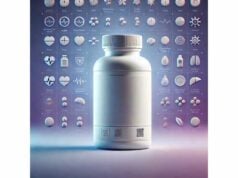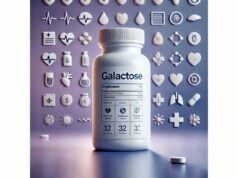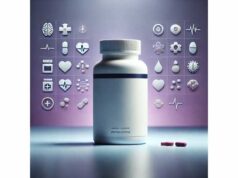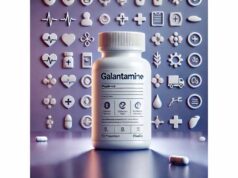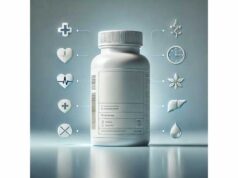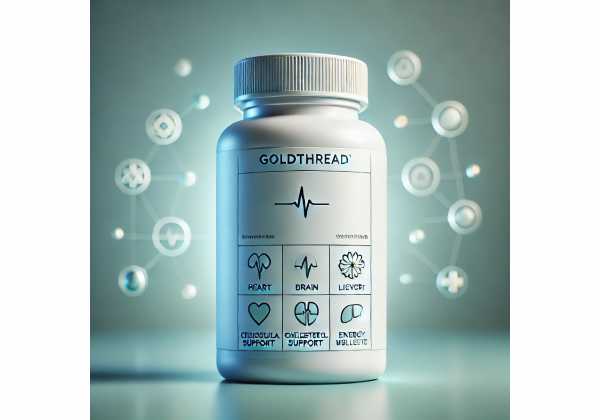
Goldthread (chiefly the rhizome of Coptis species, often sold as the TCM herb Huang Lian) is a powerfully bitter botanical prized for calming “heat” and dampness in traditional medicine—usually code for irritated, inflamed, or infected tissues. Modern analysis points to protoberberine alkaloids—especially berberine—as its signature compounds. These have been studied for antimicrobial action in the gut, support for metabolic health, and topical uses in the mouth and skin. If you are eyeing goldthread for digestive upset, as an adjunct in Helicobacter pylori protocols, or as a berberine-forward alternative for glucose and lipid control, this guide breaks down what it can and cannot do, how to use it safely, and how to match forms and doses to your goals. You will also find plain-English safety rules, who should avoid it, and evidence highlights to help you talk with your clinician.
Key Insights
- Supports gut and metabolic health; most clinical data track to berberine from goldthread.
- Avoid during pregnancy and while breastfeeding due to risk for newborn jaundice and limited safety data.
- Typical berberine dosing: 900–1,500 mg/day (split 2–3 times) with meals; traditional goldthread decoction often 2–5 g/day.
- Do not combine with drugs highly dependent on CYP3A4/CYP2D6 or P-gp (e.g., cyclosporine) without medical supervision.
Table of Contents
- What is goldthread?
- Does it really work for today’s uses?
- How to use goldthread day to day
- How much to take and when
- Side effects and interactions to know
- Who should avoid goldthread?
- Evidence at a glance
What is goldthread?
Goldthread refers to the yellow, bitter rhizomes from several Coptis species (not to be confused with goldenseal, Hydrastis canadensis). In Traditional Chinese Medicine, Huang Lian is classified as “cold” and intensely bitter; it is used to “clear heat and dry damp,” which in modern terms maps to calming inflamed mucous membranes and reining in microbial overgrowth, especially in the stomach and intestines. You will meet goldthread in classic formulas for acute diarrhea, dysenteric patterns, food poisoning–like pictures, and “toxic heat” presentations (mouth ulcers, gum irritation).
What makes goldthread notable today is its alkaloid profile—berberine heads the lineup alongside coptisine, palmatine, jatrorrhizine, and epiberberine. These protoberberines are responsible for the rhizome’s vivid yellow color and bitter taste. They are also the reason many “goldthread benefits” you hear about are really berberine benefits; berberine is the dominant molecule studied in modern clinical trials.
Key properties readers care about:
- Antimicrobial and biofilm-modulating: Active against a broad range of organisms in vitro; clinically, berberine-containing regimens can support H. pylori eradication when used with standard antibiotics.
- Anti-inflammatory: Down-shifts NF-κB–related signaling and reduces several inflammatory markers in human trials of berberine.
- Metabolic support: Human trials and meta-analyses report modest but meaningful improvements in fasting glucose, HbA1c, triglycerides, LDL-C, and blood pressure with berberine.
- Gut-focused: Traditionally used for sudden diarrhea and dysenteric stools; today, many clinicians keep a berberine-rich botanical on hand for short courses in infectious-like GI upsets, under supervision.
How it compares to goldenseal: both are bitter, yellow, and berberine-bearing, but they are different plants with different companion alkaloids and traditional uses. Substitution is common in commerce; always check labels for Coptis (Huang Lian) if that is what you want.
Quality note: alkaloid content varies by species, habitat, harvest, and processing. Standardized extracts list berberine content per capsule and provide more predictable dosing than raw rhizome powders.
Does it really work for today’s uses?
Short answer: for some goals, yes—especially when the goal maps to berberine’s evidence. Goldthread’s headlines come from clinical trials of berberine (the signature alkaloid) and from combination protocols where berberine is one active component. Here is what the better evidence says:
Metabolic health (glucose, lipids, blood pressure). Across randomized trials in adults, berberine typically lowers fasting glucose by single-digit mg/dL, trims HbA1c by a few tenths of a percent, and improves triglycerides and LDL-C. Effects are most consistent when taken for 8–12 weeks at 900–1,500 mg/day, split with meals. These magnitudes are not drug-level leaps, but they are clinically relevant as adjuncts—especially in people with elevated baseline values, metabolic syndrome traits, or when a modest, multi-marker nudge is valuable.
Gastrointestinal infections and H. pylori. In modern eradication protocols, berberine-containing regimens can perform comparably to guideline-recommended therapies in certain settings and may reduce adverse effects such as nausea and diarrhea. If your clinician is tailoring H. pylori therapy to resistance patterns or tolerability, a vonoprazan-amoxicillin-berberine triple can be an evidence-based option in some populations.
Oral and mucosal irritation. Goldthread has a long history as a topical bitter for inflamed oral tissues. Contemporary trials more often test anti-inflammatory or antimicrobial mouthwashes broadly rather than berberine alone, so evidence here is supportive but indirect. As a practical tip, short, targeted use of a berberine-bearing rinse (prepared correctly, see the “How to use” section) can be reasonable for minor, self-limiting mouth irritation—avoid in children and do not swallow.
Weight management. Trials of berberine report small reductions in body weight and waist circumference over 8–12 weeks. These effects appear to ride on improved insulin sensitivity, modest appetite effects, and shifts in gut microbial metabolites. Expect inches and pounds—not dramatic losses—and view berberine as an adjunct to diet quality, resistance training, sleep, and stress management.
What goldthread does not do well: It is not a fast antispasmodic for cramping, not a replacement for antibiotics when they are clearly indicated, and not a stand-alone solution for advanced metabolic disease. It can irritate sensitive stomachs at higher doses and, importantly, it interacts with several medications due to effects on CYP enzymes and P-gp transporters.
Takeaway: if your aim is metabolic fine-tuning or GI support within a supervised plan, a berberine-standardized goldthread extract—or berberine itself—can be a rational tool. Use carefully, monitor, and always coordinate with your prescriber if you take other medications.
How to use goldthread day to day
Goldthread comes in multiple forms. Choosing the right one depends on your goal, time horizon, and tolerance for bitterness.
1) Standardized capsules or tablets (most predictable).
Look for products stating the berberine content per serving (for example, 500 mg berberine HCl per capsule). These deliver the studied molecule in known amounts and are the easiest way to match clinical dosing. They are also the simplest to pause around medication timing to minimize interaction risks (see “Interactions”).
2) Traditional decoction (tea of the rhizome).
Bitter, effective for “damp-heat” GI pictures in TCM practice. Common daily totals (adult) are in the low grams of dried rhizome range in multi-herb formulas. Decoctions are typically simmered 20–30 minutes and sipped warm. Pros: whole-herb synergy; fast onset in acute GI contexts. Cons: taste is intensely bitter; alkaloid yield varies; dosing is less exact than standardized capsules.
3) Tinctures and liquid extracts.
Convenient for short courses and topical swish-and-spit use. If you choose a liquid, prefer those that list berberine mg/mL or provide a QCE (quantity crude equivalent) so you can estimate intake. Because liquids can contact mucosa directly, they can be helpful for brief oral applications (do not use in children; do not swallow concentrated preparations).
4) Topical mouth rinse (targeted, short term).
For minor, self-limited gum or oral irritation in adults, a very dilute rinse made from a berberine-containing liquid extract can be swished for 30–60 seconds and spat out, once or twice daily, for a few days. Keep concentrations low, avoid if you have open lesions or are prone to canker sores triggered by alcohol-based extracts, and never use in infants or toddlers. If symptoms persist beyond a few days, see a clinician.
Smart pairing and timing tips
- With meals: Split berberine-bearing doses with food to reduce GI upset and to align with post-prandial glucose handling.
- Medication spacing: Because berberine can inhibit CYP3A4/CYP2D6 and P-gp, separate from narrow-therapeutic-index drugs by several hours and coordinate with your prescriber (details below).
- Course length: For metabolic goals, trial 8–12 weeks with lab monitoring. For GI upsets, short courses (3–14 days) are typical; for H. pylori, follow your clinician’s exact protocol.
Quality and sustainability
Choose brands that perform third-party testing for heavy metals, microbial contaminants, and verify alkaloid content. Goldthread is slow-growing; favor cultivated sources and companies with transparent supply chains to reduce pressure on wild stands.
How much to take and when
For metabolic support (adults):
- Berberine (from goldthread or as berberine HCl):
900–1,500 mg/day, divided 2–3 times with meals (e.g., 500 mg with breakfast and dinner, or 500 mg with each main meal). Many trials use 1,500 mg/day total for about 12 weeks. - When to reassess: Check fasting glucose, HbA1c, triglycerides, LDL-C, HDL-C, and blood pressure at baseline and around 8–12 weeks to judge effect and tolerability.
For gastrointestinal support:
- Acute, self-limited diarrhea (adult): Short courses of berberine are sometimes used for 3–7 days at 900–1,500 mg/day, divided with meals, within a clinician-guided plan. If fever, bloody stools, or dehydration are present, seek medical care first.
- H. pylori protocols: Doses vary by regimen (for example, 500 mg berberine twice daily combined with amoxicillin and an acid blocker for 14 days in some protocols). Only follow a clinician-prescribed plan.
Traditional herb equivalents (decoction):
- In traditional practice, adult daily totals often land around 2–5 g dried rhizome when used as part of a multi-herb formula. Decoction yields of berberine and companion alkaloids vary with cut, simmer time, and water volume; do not assume a gram-for-gram equivalence with standardized capsules.
Topical / oral rinse (adults):
- Use low concentrations for brief periods; swish and spit. Do not use in infants, children, pregnancy, or breastfeeding. Do not swallow. Discontinue if irritation occurs.
Timing and absorption notes
- With food reduces nausea and may improve adherence.
- Divided dosing smooths GI tolerance.
- Dihydroberberine is a derivative marketed for higher bioavailability; clinical outcomes data are still modest compared with berberine itself. If you choose it, use conservative dosing and the same safety rules.
Practical ceiling: Without prescriber oversight, avoid exceeding 1,500 mg/day of berberine or long courses beyond 12 weeks. For whole-herb decoctions, avoid high-dose “megadosing” unless you are under care and being monitored.
Side effects and interactions to know
Common, usually mild:
- GI symptoms: nausea, cramping, constipation, or loose stools—most often dose-related and improved by taking with meals and splitting doses.
- Taste and mouth feel: concentrated liquids are intensely bitter and may irritate sensitive oral tissues.
Less common but important:
- Hypoglycemia risk when combined with glucose-lowering medications. Monitor closely if you take metformin, sulfonylureas, insulin, or GLP-1/GIP agents; coordinate with your prescriber for any adjustments.
- Liver enzymes: transient ALT/AST shifts are uncommon but have been observed; baseline and follow-up labs are sensible for longer courses or in those with liver disease.
Drug interactions (read carefully):
Goldthread’s key alkaloids, especially berberine, can inhibit CYP3A4, CYP2D6, and CYP2C9 and affect P-glycoprotein (P-gp) transport. Practical implications:
- Immunosuppressants: Cyclosporine (and possibly tacrolimus) can reach higher blood levels with berberine on board. This is a hard stop without prescriber oversight.
- CYP3A4 substrates with narrow windows: midazolam is a classic probe; similar caution applies to certain statins, calcium-channel blockers, some antiarrhythmics, and others.
- P-gp substrates: digoxin and some chemotherapeutics are transported by P-gp; berberine may alter their bioavailability.
Spacing helps but does not guarantee safety. If you take essential medications metabolized by CYP3A4/CYP2D6/CYP2C9 or transported by P-gp, involve your clinician, consider drug-level monitoring where appropriate, and watch for side effects.
Allergy and sensitivity: As with any herb, allergic reactions are possible. Discontinue and seek care for rash, swelling, or breathing difficulty.
Who should avoid goldthread?
- Pregnancy: Avoid. Berberine may displace bilirubin from albumin and is not recommended in pregnancy.
- Breastfeeding: Avoid. Berberine can pass into breastmilk; in newborns and young infants, bilirubin displacement can raise the risk of jaundice-associated complications.
- Infants and young children: Do not use.
- Transplant recipients or those on calcineurin inhibitors: Avoid unless your transplant team explicitly approves and monitors.
- People on multiple interacting medications: If you take drugs heavily dependent on CYP3A4, CYP2D6, CYP2C9, or P-gp, do not self-supplement—review with your prescriber first.
- Pre-op: Stop at least 7 days before planned surgery unless your surgeon advises otherwise.
- Active severe GI disease or high fever with diarrhea: Seek medical care first; goldthread is not a substitute for necessary evaluation and treatment.
If any of these situations apply—or if you are unsure—talk with your clinician before you start.
Evidence at a glance
- Metabolic outcomes: Systematic reviews of randomized trials show that berberine (often 900–1,500 mg/day for 8–12 weeks) lowers fasting glucose and HbA1c modestly and improves triglycerides, LDL-C, and sometimes blood pressure. These changes are additive to standard care and lifestyle measures, not replacements for them.
- Dose–response hints: Meta-analytic modeling suggests around 1 g/day is a sweet spot for triglycerides and total cholesterol, with higher doses offering diminishing returns for some markers and more GI side effects. Individual response varies; monitor labs.
- H. pylori support: In an RCT, berberine 500 mg twice daily paired with amoxicillin and an acid blocker achieved eradication rates comparable to standard clarithromycin-based quadruple therapy over 14 days, with similar adverse-event profiles. Protocol selection depends on local resistance and clinical judgment.
- Mechanism and PK: Berberine acts through multiple pathways (including AMPK activation) and is a substrate/inhibitor of key drug metabolism systems; its poor oral bioavailability helps explain the need for divided dosing and the promise (yet limited outcomes data) of formulations like dihydroberberine.
- Traditional dosing context: In TCM, adult decoction totals of 2–5 g/day dried rhizome are common within multi-herb formulas for “damp-heat” GI patterns; clinical research on metabolic endpoints largely uses standardized berberine rather than raw rhizome.
Bottom line: If you want a bitter botanical that punches above its weight for metabolic tune-ups and GI protocols—and you can use it safely—goldthread (or berberine standardized from it) is a sensible option to discuss with your clinician.
References
- The effects of berberine supplementation on cardiovascular risk factors in adults: A systematic review and dose-response meta-analysis (2022) (Systematic Review)
- Efficacy and safety of triple therapy containing berberine, amoxicillin, and vonoprazan for Helicobacter pylori initial treatment: A randomized controlled trial (2023) (RCT)
- Berberine – MotherToBaby | Fact Sheets (2023) (Guidance)
- Repeated administration of berberine inhibits cytochromes P450 in humans (2011)
- Large dosage Huanglian (Rhizoma Coptidis) for T2DM: A protocol of systematic review and meta-analysis of randomized clinical trials (2020)
Medical Disclaimer
This article is for educational purposes only and is not a substitute for professional medical advice, diagnosis, or treatment. Do not start, stop, or change any medication or supplement, including goldthread or berberine, without talking to your qualified healthcare provider—especially if you are pregnant, breastfeeding, planning surgery, managing chronic illness, or taking prescription medications that may interact. If you think you are experiencing a medical emergency, call your local emergency number immediately.
If you found this guide useful, please consider sharing it on Facebook, X (formerly Twitter), or your favorite platform, and follow us for future updates. Your support helps us continue producing clear, trustworthy health content. Thank you!


